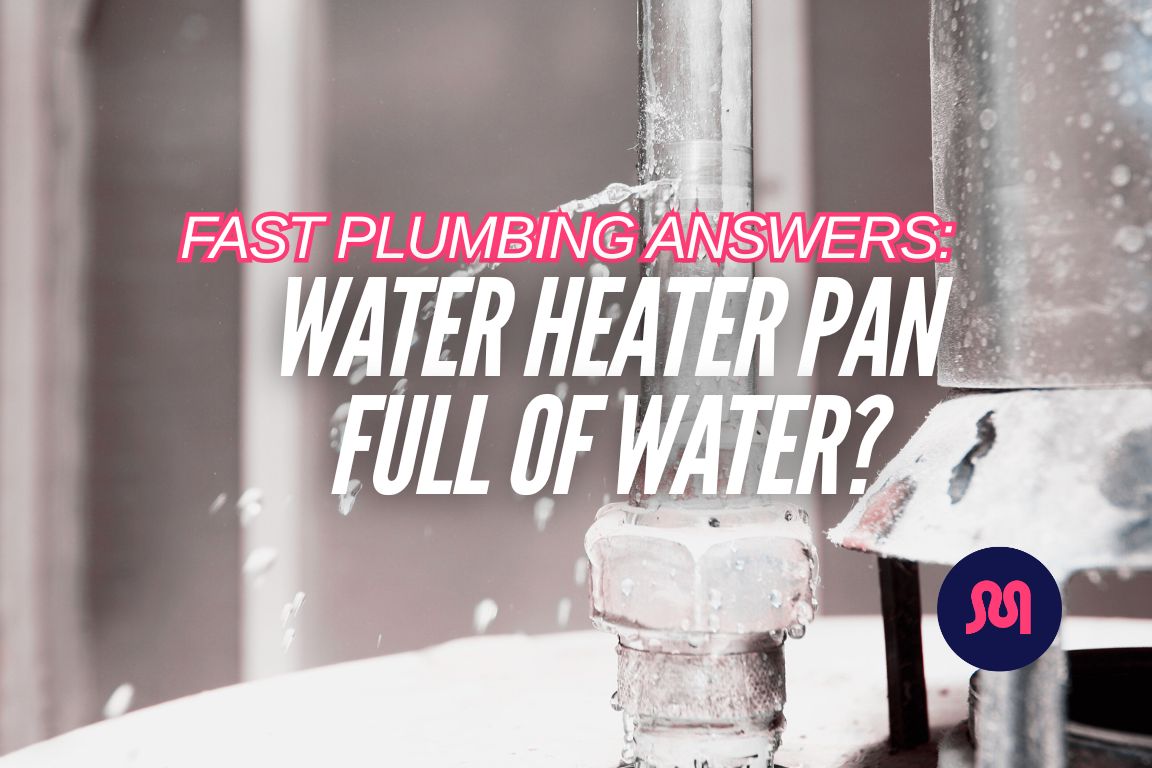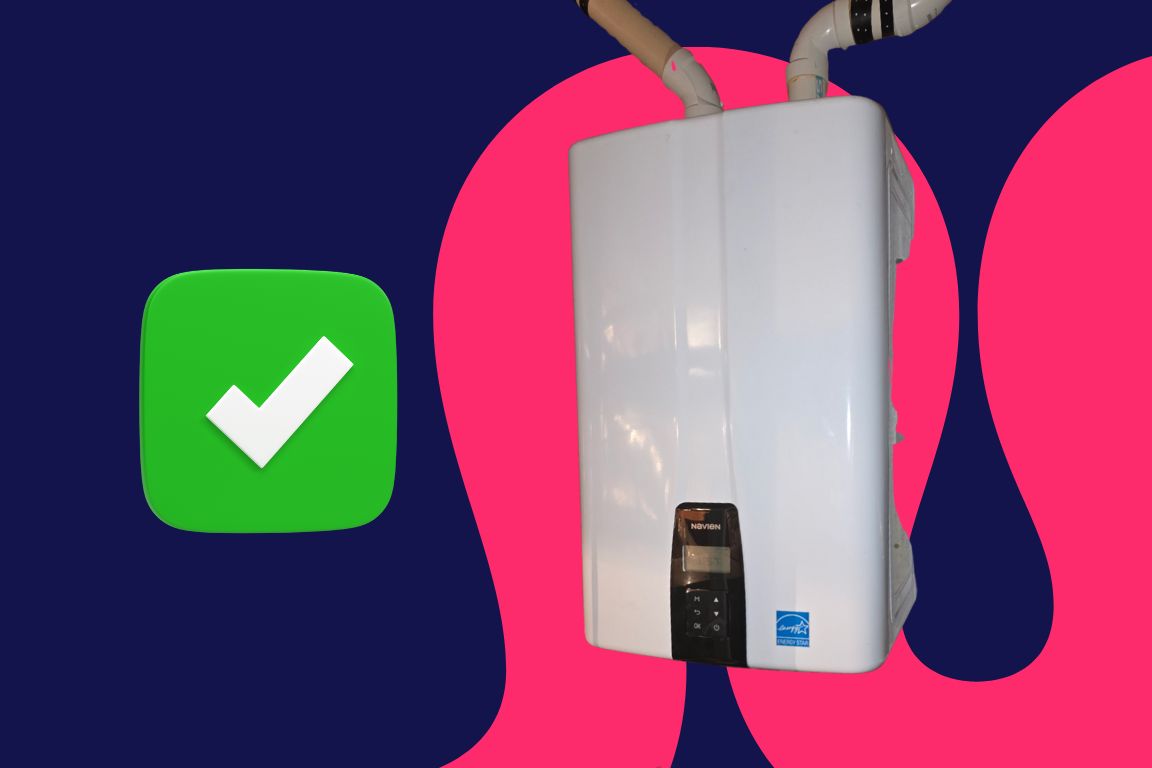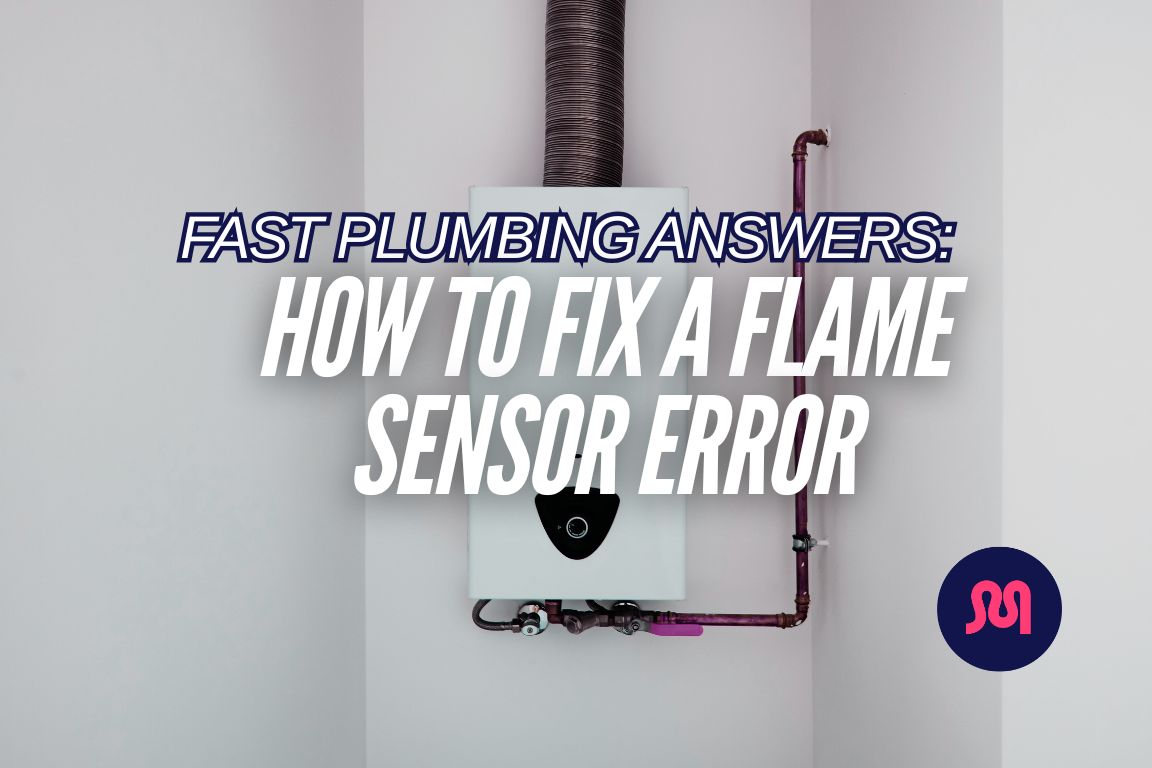Fast Plumbing Answers: Water Heater Pan Full of Water?

table of contents
table of contents
You walked past your water heater and noticed the drain pan is full to the brim with water. This triggers alarm bells in your head- is there a leak? With all the valves and connections, you’re not sure where to start looking.
Don’t worry: we’ll answer all your questions in 2 minutes or less.
At Mother, it’s our mission to stop home plumbing emergencies before they happen. Our licensed plumbing experts focus on prevention and maintenance, so homeowners avoid costly repairs. Your water heater’s supposed to be a source of comfort, not stress!
A full drain pan means there’s an overflow of water from your tank. This is most commonly caused by a leak in your drain valve or the temperature & pressure valve (T&P valve). If your valves are fine, check for signs of tank corrosion- then call a licensed plumber.
Got a leaky water heater in Dallas? Call Mother 24/7- our water heater techs will come out at the first available appointment to get your hot water up and running.
{{water-heater-repair="/services/water-heater-repair"}}
Here’s Why Your Water Heater Pan is Full of Water

Here’s the good news: diagnosing the problem is pretty easy. Your water heater has a leak somewhere, and you’re only looking in two possible places:
- A leak from one of your water heater valves; or
- A leak caused by corrosion of the tank or fittings..
“If you have water in your drain pan, there’s usually a clear sign where it’s coming from,” says our Master Plumber Jesse Crane.
Take a flashlight and inspect all the valves and connections on your water heater. If you don’t see visual signs of a leak from any of them, then the leak’s inside the tank.
The most likely reason: a leaky water heater valve
Jesse says there are 2 common culprits you should check first:
- The drain valve: This valve is near the bottom of your water heater. Heat pump heaters have them towards the center; gas and electric models place them off to one side. Look for a brass or plastic valve with a threaded end.
- The temperature & pressure valve (T&P valve): The T&P valve is higher up on your tank- either on top of the tank or on the side. It’s normally made of brass, with a small lever atop it.
If your valves aren’t made of brass, you’re probably going to find the leak there.
“Plastic valves are much more likely to crack and leak,” Jesse says. “If you have plastic fittings, they’re probably to blame.”
If your valves are fine, check the tank and fittings
If your drain and T&P valves are in the clear, damage to your tank or fittings may be causing the leak that’s filling up your drain pan.
Examine the fittings first. If one is loose, it’s a simple spot for water to escape, trickle down the side of your tank and into your drain pan. Loose metal fittings are also prime for corrosion and rust.
If the fittings are fine, check for corrosion along the outside of the tank itself. Jesse explains that just because you don’t see any rust doesn’t mean your tank isn’t corroded.
“If you can’t tell where the water is coming from, then it could be leaking from the inner shell of the tank and out the bottom,” he states.
Got multiple water heater issues? Our Water Heater Repair Guide covers them all- it’s the only one you’ll ever need, so bookmark it for the future!
{{dfw-water-heater-repair-guide="/blogs/dfw-water-heater-repair-guide"}}
What To Do If Your Drain Pan is Full of Water

First, use a shop vac to clear the standing water from your drain pan. Wear gloves and protective facial coverings- if the water’s been there awhile, it can attract pests or become contaminated.
Your next steps are determined by the source of the leak.
If the leak is coming from the drain valve
Here are the steps to take if your drain valve is leaking:
- Turn off the power supply, then turn off the incoming water supply.
- Do not do anything until the power is off and the water heater cools down completely.
- Attempt to tighten the valve with an adjustable wrench. Do not overtighten the valve, as the damage caused may force you to buy a new part.
- If this doesn’t work, call a plumber. It’s too invasive to try and replace a gasket or the valve itself- you can scald yourself or cause a minor flood.
If the leak is coming from the T&P valve
This is generally caused by trapped sediment in the T&P valve port opening.
- Turn off the power supply, then turn off the incoming water supply.
- Do not do anything until the power is off and the water heater cools down completely.
- Remove the T&P valve and carefully rethread it into the opening. Do not overtighten.
- Lift the lever on the valve to release water and dislodge debris. Be careful of any hot water that may still exist.
- If this doesn’t work, call a plumber. They’ll need to drain your tank and install a new T&P valve.
If the leak is coming from a loose fitting
As with all other instructions in this section, turn off the power and incoming water supply. Then, let your water heater fully cool before attempting DIY repairs.
- Use an adjustable wrench to carefully tighten the fitting. Do not twist too hard, as you’ll damage the fitting.
- If your fitting is still too loose, you’ll need to drain some water from the tank, remove the fitting and clean the threads. This isn’t a task for amateur DIYers.
- In most cases, call a plumber if step 1 does not immediately work. There are too many scalding risks involved, and any incidental tank damage may void your warranty.
If the leak is coming from your tank
If you notice corrosion or rust (or suspect corrosion on your water heater tank’s inner shell), call a plumber immediately.
Corrosion indicates the tank has structural issues that have existed for some time. Attempting to DIY any repairs may cause a broader crack to form- then, you’re dealing with total water heater replacement instead of calling a plumber for simple repairs.
Do not touch any rusty or corroded areas of your tank. You risk injury, cutting your skin, or potential exposure to mold or mildew you don’t see.
Water Heater Leak Filling Your Drain Pan? Call Mother

Your water heater’s drain pan can fill quickly due to a leaky valve or loose fitting. If these don’t exist, our Master Plumber says you’re likely dealing with a cracked or corroded tank.
While diagnosing the issue is simple, any repairs past simple tightening of a valve or fitting should be left to a licensed plumber. The risk of scalding your skin or flooding the area around your tank is too great- and any damage you accidentally cause will void your product warranty.
If you need to call a plumber, don’t fret- the cost to repair a T&P valve or drain valve is relatively low, and you’ll walk out with a quality brass component designed to last as long as your tank.
Leaky water heater in Dallas? Call Mother 24/7- we’re always here to answer your call and give you the first spot in line for fast repairs!
{{water-heater-repair="/services/water-heater-repair"}}
Common Q’s about Water Heaters
How long does a home water heater last?
Expect a traditional tank water heater to last 8-12 years, and a tankless unit to last 15-20 years. In Dallas, these estimates are affected by mineral scaling - conduct annual maintenance to reach your expected lifespan.
Why is my water heater making a popping or hissing noise?
A popping or hissing noise in your water heater tank indicates sediment buildup and hard mineral scaling. These issues lead to corrosion, decreased water flow and increased utility bills.
What are the most common water heater tank repairs?
A majority of conventional water heater tank repairs involve these six components:
- Thermostat
- Burner (heating element)
- Pilot light
- Anode rode
- T&P valve
- Leaks due to tank corrosion or scaling
How often should I flush my water heater tank?
In most areas, flushing your water heater tank once per year is sufficient to remove sediment buildup. In mineral-rich areas like Dallas, you may want to flush your tank every 9 months to reduce scaling.
Do you offer a water heater installation warranty?
Mother Modern Plumbing offers a minimum 6-year warranty on parts and labor for water heater installation, in addition to your manufacturer's warranty. Specific brands are eligible for a workmanship warranty of more than 6 years.




